The content of the article
Specialists have developed a classic technology for making moonshine based on granulated sugar, and they themselves have developed effective methods for distilling a drink. In order not to waste time and materials, we will tell you how to easily prepare an alcoholic drink at home. Consider the important aspects and give step by step instructions.
How to make mash from sugar
Before embarking on homebrewing take care of the container, it should be perfectly clean and dry. Wash jars with baking soda, rinse with warm water, then pour over boiling water. Sterilize containers in a convenient way. You can put them neck down in the oven or boil them by placing them in a saucepan with water. After all manipulations, wipe the container dry and leave at room temperature until complete evaporation of moisture.
Technology of making sugar mash
To get high quality moonshine use classic cooking technology. At the exit, you have more than 5 liters of beverage strength of about 40 degrees.All presented ingredients are subject to correction, since the ratio of components is selected taking into account possible changes.
- Purified drinking water - 19 liters.
- granulated sugar (preferably beetroot) - 6.3 kg.
- citric acid - 28 gr.
- dry yeast - 125 gr.
Stage number 1. Choosing the right proportions
- First you need to decide on the amount of moonshine that you want to get at the exit. When preparing a drink on your own, you will have about 1.2–1.25 liters. from 1 kg. sugar, the fortress remains the same - 40 degrees.
- It is recommended to increase the amount of each component by 15%, for certain reasons, the yield of the final product is lower by exactly the indicated value. Changes in quantity are achieved due to possible incorrect distillation, temperature, quality of the raw materials used.
- Per 1 kg sugar sand accounts for 22-25 grams. dry baker's yeast, 3.5 l. filtered (drinking) water. Also need another 0.5 liters. fluid in the event that you decide to carry out the inversion procedure.
Stage number 2. Sugar Invert
- Under the inversion is commonly understood the preparation of a syrup based on citric acid and granulated sugar. This should be done for the reason that in the process of fermentation of the composition, the first thing is to break down the sugar, the output is fructose with glucose. Later listed monosaccharides are processed by yeast into an alcohol base.
- On the surface of sugar crystals there are so-called pathogenic microorganisms that multiply under favorable conditions (optimal temperature, humidity). Since the mash has its own particular odor, foreign smells are undesirable, for these reasons it is necessary to prevent the reproduction of harmful bacteria.
- Moonshine, made from inverted granulated sugar, turns out to be more delicious, fermented faster. If you wish, you can skip this step, but we recommend not to do this. So, if you adhere to the advice, tell you how to cook the right syrup.
- For cooking, prepare a large enameled pan with thick walls and a bottom, pour 3.5 liters into it. drinking water, put on medium heat, heat to 75 degrees.After that, reduce the power of the burner, add 6.3 kg. sugar, slowly begin to stir with a wooden spatula.
- Make sure that the sand does not stick to the walls of the tank, otherwise it will burn. Bring the mass to a homogeneous state, then add power to the mark above the minimum, but below the average, let the syrup boil. Tomit mix another 7-10 minutes, constantly remove the foam from the surface of the mass.
- Next, you must carefully (!) Pour citric acid in an amount of 28 grams. When adding a product to the sand, the foam will rise very high, so do not rush to pour everything at once, proceed step by step. As soon as the citric acid is in the pan, reduce the stove to a minimum, close the container with a lid, simmer on low heat for about 1 hour.
Stage number 3. Water treatment
- Do not neglect this stage, because it is the basis of the final product. In the process of making home brew, only purified water without taste, color, or odor is used.
- If you are cooking moonshine on sugar, in advance, defend the already filtered water for 2-3 days. Only after this period can it be used.
- Due to such filtering, harmful impurities are deposited on the bottom of the tank and the stiffness decreases. After settling, the liquid must be drained from the sediment using a thin medical tube.
Important!Never distill or boil water for making mash. As a result of such actions, the oxygen needed for fermentation will be lost.
Stage number 4. Sugar mix with water
- Pour the sugar syrup into the fermentation tank, add 19 liters. pre-settled cold water. In cases where non-inverted granulated sugar is used, the product is pre-dissolved in warm water.
- Be sure to intensively stir the composition so that the granules are completely dissolved. Both ordinary and inverted sugar is mixed with liquid, while the temperature of the final product should be in the range of 26-29 degrees.
- Do not fill the fermentation can with more than 2/3 of the total volume. If we ignore this recommendation, the foam will begin to accumulate and flow out of the banks. As a result, you will be forced to collect the product from the floor surface.
Stage number 5. Yeast addition
- When added with wort dry yeast, they must first be activated. To properly carry out the procedure, use the recommendations of the manufacturer, which can be found on the back of the bag.
- As a rule, if the water is hot, it should be cooled to the level of 31-34 degrees. Next, dry yeast is poured in accordance with the specified proportions, the capacity for breeding is covered with a lid.
- During the infusion of the composition, the bowl or jar in which the yeast is found is wrapped with a thick towel and then taken to a warm place with a stable temperature regime.
- After half an hour in the tank, a cap is formed on the basis of ascended yeast, this sign indicates that the product is ready to be added to the wort.
- If you are using baker's yeast for making moonshine, do not be alarmed when you see the possible formation of foam falling outside the container with the brew.
- To extinguish the foam, add the usual store cookies in the amount of 15 grams. or 18 ml. olive / vegetable oil. It is important to realize that such components will not affect the quality of the final product.
Stage number 6. Fermenting wort
- This step involves the installation of a water seal on the neck of the tank. As soon as such manipulations are completed, transfer the vessel to a room with a stable temperature regime (27–30 degrees).
- Without fail, make sure that the room does not have sharp temperature fluctuations, otherwise the yeast will not be able to fully develop. In cases with the preparation of the composition on the sugar, the last inversion, the mash is soft, has a caramel smell and does not spoil the room air.
- To maintain the optimum temperature, cover the container with warm blankets, cover with pillows or wrap in old fur coats. You can also enclose the bank with building materials that are responsible for thermal insulation.
- As a rule, the fermentation stage lasts about 4-10 days, in most cases 5-7 days is enough. Once at 14 o'clock, it is necessary to take a jar of bragi and shake it vigorously for 45 seconds. It is not possible to remove the water lock. Such a move will reduce the amount of carbon dioxide that interferes with the full effect of yeast.
Stage number 7. Bragg Readiness Check
It is necessary to evaluate the readiness of sugar mash to be able to further distill the composition. Consider the current signs by which you can determine whether the product is ready or not:
- the end of the hiss;
- the smell of alcohol is clearly felt;
- the composition has a bitter aftertaste, since the yeast has already processed sugar into alcohol;
- the absence of gurgling in the water seal indicates that carbon dioxide has ceased to emit;
- the mash has a light shade, a precipitate forms at the bottom;
- when you bring a burning match to the braga, it does not go out, continuing to burn.
At this stage it is important to identify from 2 to 6 signs, this will be evidence of the brag's readiness for distillation. With fewer than two signs, you can easily make a mistake.
For example, a large amount of sugar leads to the early death of yeast, they do not have time to process everything. For the most part, the yeast fungus begins to “doze” in alcohol, the concentration of which exceeds the level of 12%. As a result, ready-made braga will remain sweet.
Stage number 8. Lightening and degassing
- Remove the brew from the sediment using a thin tube, pour it into the pan,put the tank on the stove and heat up to 48-52 degrees. After degassing the mash, pour it back into the vessel and lighten it with bentonite (if possible).
- Bentonite is a natural white clay. It is important that the composition of the product were absent aromatic additives, otherwise they completely spoil the brew.
- To lighten 25 liters. Bragi you need about 60 grams. bentonite. Clay should be pre-grind in a coffee grinder, and then mixed with 275 ml. slightly warm water. After that, knead the clay to a pasty consistency and wait about a quarter of an hour.
- After the specified period, add diluted bentonite to the mash, close with a lid, shake the composition for 2 minutes, then leave the composition for 25 hours and proceed to the distillation.
Stage number 9. Distilled moonshine
- Prepare a still cube, drain the clarified mash from the sediment. Now you need to separate the alcohol from other components, this will help you distilled first stage.
- The procedure is carried out at low power. Prepare a way out into several parts in advance: head and body. Collect the first 50 ml in a separate jar. moonshine, which is obtained from 1 kg.Sahara. As calculations show, the first 300 ml. define the head, it is used only for technical purposes.
- Next you need to collect the body of moonshine, it is this fraction that you can drink. The selection of this part is terminated at the moment when the fortress of the jet of drink falls below the mark of 40 degrees. To correctly evaluate the indicator, use an alcohol meter.
Stage number 10. Purification, second distillation, upholding
- The ideal cleaning option is the use of activated carbon or potassium permanganate mixed with baking soda. The main condition is to dilute the distillation of the first stage with distilled water before refining so that the strength of the composition drops to 20 degrees.
- In order to fire safety, use only diluted moonshine for the second leg. Pour it into a special cube, start the procedure on a low fire.
- Cut off heads that are unsuitable for use (the first 50 ml. Of the composition, which are obtained from 1 kg of granulated sugar).
- Start the selection of the main part, as in the previous case, until the fortress drops to below 40 degrees.
- Dilute the product to the desired strength, bottled, clog and send to stand in a cool place.
Preparation of moonshine requires patience, certain theoretical, and better practical skills and attention to detail. It turned out that the Russians love this drink more than the store products, and it is not surprising. Follow the instructions, watch the proportions, do not violate the terms.
Video: how to clean moonshine

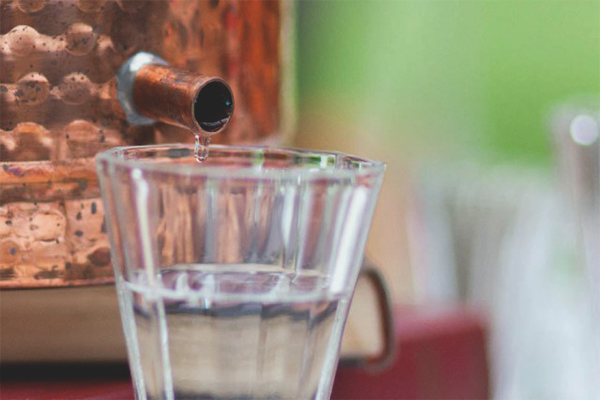


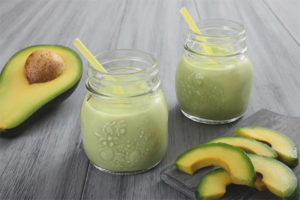
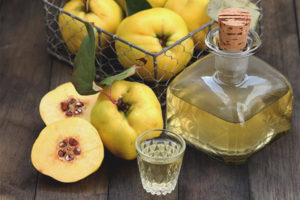


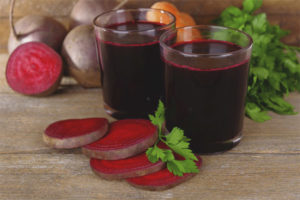
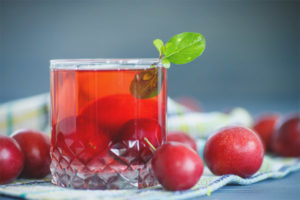

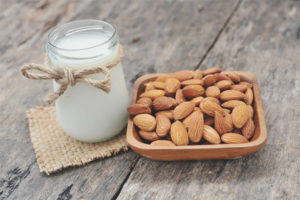
To send